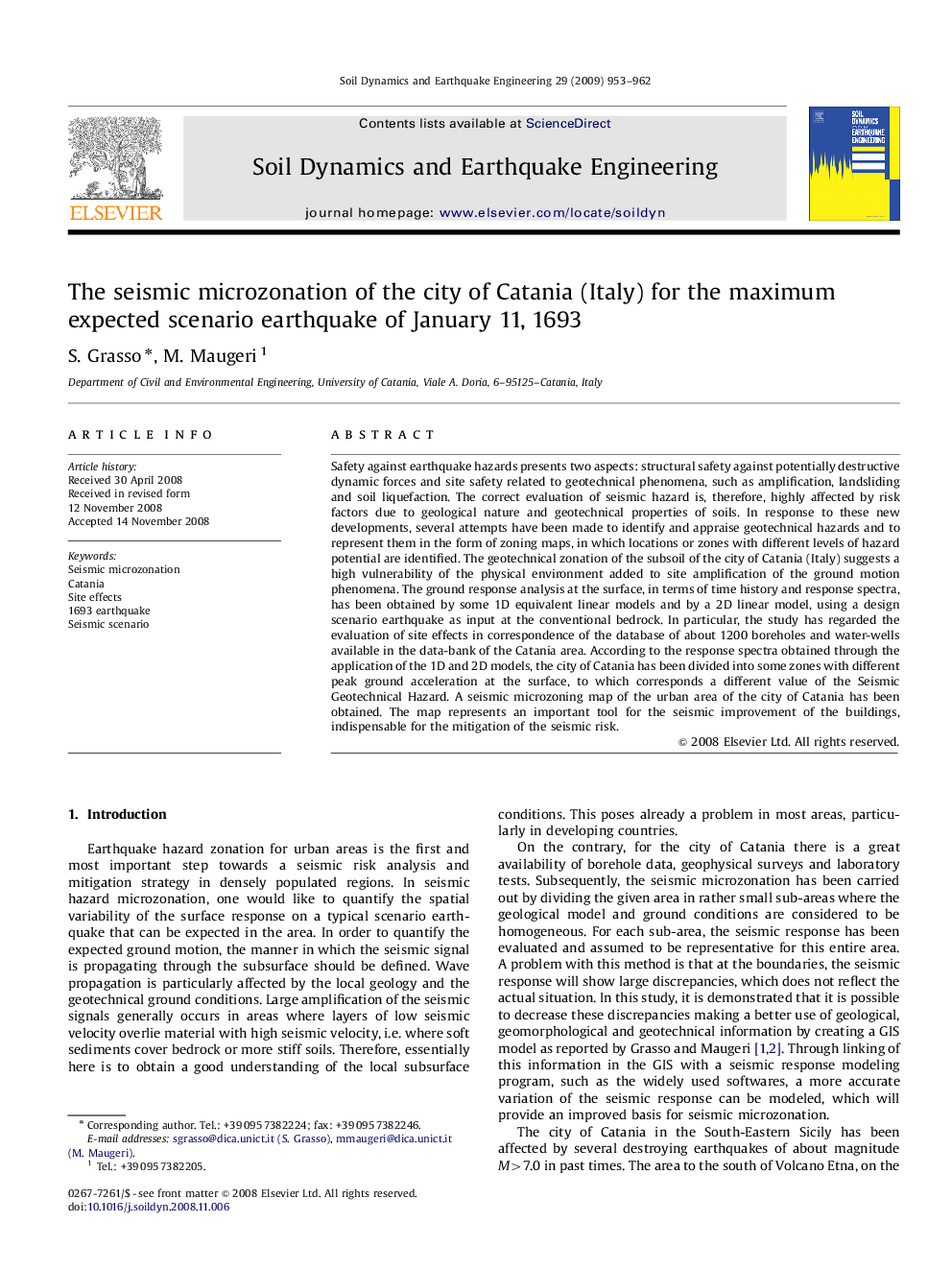| Article ID | Journal | Published Year | Pages | File Type |
|---|---|---|---|---|
| 304953 | Soil Dynamics and Earthquake Engineering | 2009 | 10 Pages |
Safety against earthquake hazards presents two aspects: structural safety against potentially destructive dynamic forces and site safety related to geotechnical phenomena, such as amplification, landsliding and soil liquefaction. The correct evaluation of seismic hazard is, therefore, highly affected by risk factors due to geological nature and geotechnical properties of soils. In response to these new developments, several attempts have been made to identify and appraise geotechnical hazards and to represent them in the form of zoning maps, in which locations or zones with different levels of hazard potential are identified. The geotechnical zonation of the subsoil of the city of Catania (Italy) suggests a high vulnerability of the physical environment added to site amplification of the ground motion phenomena. The ground response analysis at the surface, in terms of time history and response spectra, has been obtained by some 1D equivalent linear models and by a 2D linear model, using a design scenario earthquake as input at the conventional bedrock. In particular, the study has regarded the evaluation of site effects in correspondence of the database of about 1200 boreholes and water-wells available in the data-bank of the Catania area. According to the response spectra obtained through the application of the 1D and 2D models, the city of Catania has been divided into some zones with different peak ground acceleration at the surface, to which corresponds a different value of the Seismic Geotechnical Hazard. A seismic microzoning map of the urban area of the city of Catania has been obtained. The map represents an important tool for the seismic improvement of the buildings, indispensable for the mitigation of the seismic risk.
